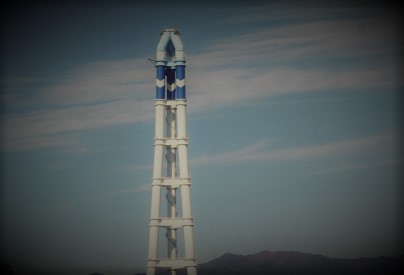On November 16, 2020, Joban Joint Power Co., Ltd. announced [PDF, Japanese] the retirement of Nakoso Power Station Unit 10.
After undergoing verification tests from September 2007 to March 2013, the unit, which utilizes an air-blown gasification method that can be expected to generate power more efficiently compared to the oxygen-blown gasification method, began operation as “Japan’s first commercial Integrated Gasification Combined Cycle (IGCC) unit” in June of the same year. Although its energy output is not so large at 250,000 kW (250 MW), it was spoken of with pride as one of Japan’s high-efficiency coal-fired power generation facilities, introduced as having “established the world’s longest continuous operation as an IGCC” or “with a power generation efficiency recorded at 42.9%” when records were updated. However, the reason for the unit’s retirement has not yet been disclosed. Additionally, the process leading to its closure has included an inspection by the operating company that was longer than initially planned (September 5, 2019 to January 30, 2020 *originally planned to finish on December 14, 2019), an unexpected suspension of operation due to a gasification furnace malfunction (February 23, 2020), and a planned suspension (April 1, 2020). Even though it had long operated as a commercial unit, this facility was completed using subsidies dating as far back as its design stage, and so it would be preferable if any problems experienced were disclosed publicly, especially technical ones.
Should we really continue to promote IGCC?
IGCC, along with carbon capture and storage (CCS) technology, is one of the next-generation technologies the Japanese government is focusing on developing for its low-carbon energy infrastructure. However, its CO2 emissions are about 650g / kWh, about twice that of natural gas-fired power generation, and so it is clear that even IGCC emits too much carbon to effectively mitigate global warming. Furthermore, although it is said that IGCC can reduce power generation costs by using low-grade coal, which has a low calorific value but is inexpensive and has abundant reserves, this is only in the case of mass production, which will be difficult as coal phase-outs continue to progress throughout the world and no plans for new coal-fired power plants are expected. Given that it has been reported that IGCC without CCS does not effectively reduce CO2 emissions in the first place, there are many doubts as to the effectiveness of mitigating global warming through IGCC.
In addition, near Nakoso Unit 10 is another IGCC power generation facility, Nakoso IGCC Power Station (output 543 MW), planned to begin operation in September 2020 but with no reports of it starting operation as of November 2020. After its ignition on February 19, igniting the gasification equipment on June 5, and reaching its rated power output on July 19, it appears to be in its final stages of adjustments.
* For more on the problems regarding IGCC, please refer to the following report by Kiko Network:
Universal failure: How IGCC coal plants waste money and emissions [PDF]

